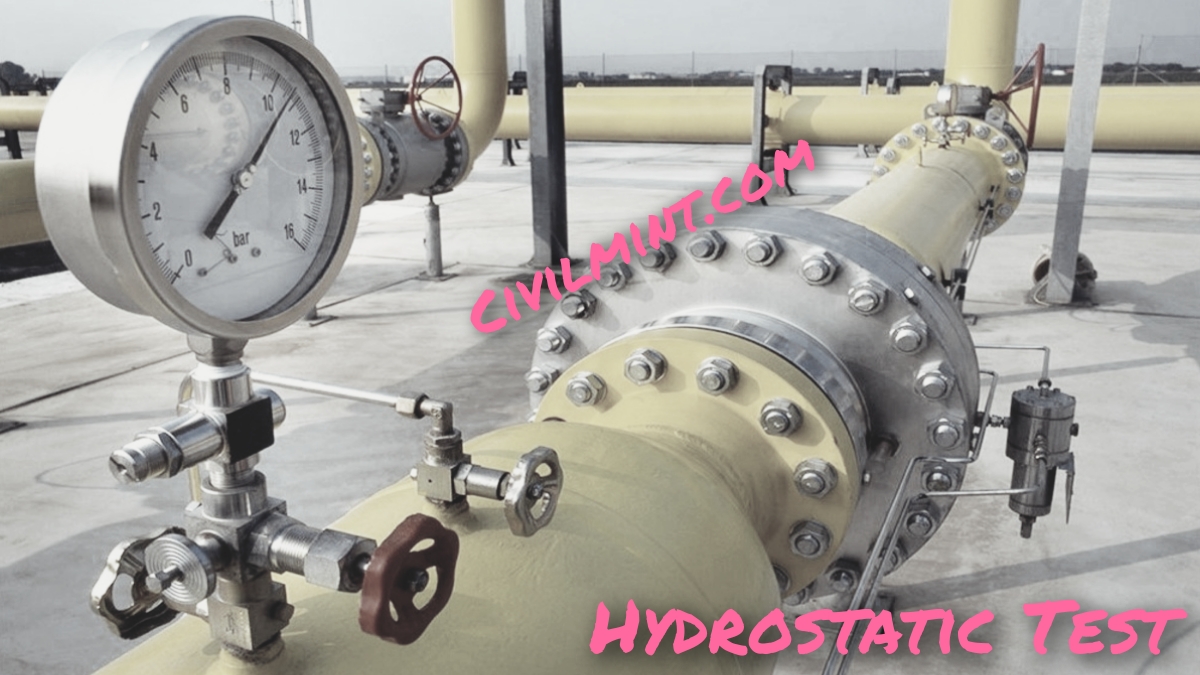Table of Contents
What Is Hydrostatic Test?
A hydrostatic test is a test used to check strength and leakage of a pressure system. These pressure system can be tank, pipeline, container etc.

The process involves filling the container with water or another liquid and pressurizing it to a specified test pressure. The liquid may be dyed to aid in spotting leaks, and the tightness of the container can be checked by shutting off the supply valve and observing whether there is a pressure loss. Permanent deformation of the container is measured to check its strength.
Hydrostatic testing is the most common method for testing pipes and pressure devices, ensuring they meet safety standards and remain durable over time. Newly manufactured vessels are initially tested using this method and are regularly retested in line with relevant standards. If hydrostatic testing is not possible, a pneumatic pressure test may be used as an alternative.
It’s essential to test pressure vessels used for transporting and storing gases as they can be dangerous and explode if they fail under pressure. By performing hydrostatic tests, we can make sure that the containers are safe and reliable, which helps keep people and property safe.
Test Description
Hydrostatic testing is a crucial process to assess the strength and integrity of pressure container. It involves filling the container with either water or oil and pressurizing it to the test pressure while checking for leaks or permanent changes in shape. Dye may be added to the liquid for easy detection of any leaks. The test pressure is typically much higher than the operating pressure to provide a safety factor as per applicable regulations.
Water is commonly used in hydrostatic testing as it is inexpensive, easily accessible, and harmless to the system being tested. In cases of water contamination concerns, hydraulic fluids or oils are used instead. These liquids are nearly incompressible and require less work to develop high pressure, thus releasing only a small amount of energy in case of failure. High-pressure gas, on the other hand, can result in an explosion due to its expanded volume.
Smaller pressure vessels are typically subjected to a water jacket test where the container is immersed in a container filled with water, and its change in volume is measured while being pressurized for a specific duration. The expansion is measured and compared to the final volume in the measuring tube to determine any permanent volume increase due to plastic deformation under pressure. Any leaks are detectable by holding the volume in the pressurized vessel for a specified period before depressurizing. A permanent set exceeding the maximum specified will indicate failure, and the cylinder will be deemed unsafe.
The details of the test, such as the design standard, serial number, manufacturer, and manufacture date, are stamped onto the cylinder. Once the test is completed, the cylinder or its nameplate is typically marked with the date of the successful test and the identification mark of the testing facility. For containers such as boat fuel tanks that must withstand the hydrostatic pressure of their contents, a simpler hydrostatic test can be performed using a garden hose to pressurize the container and physically inspect it for leaks.
Faqs
Hydrostatic test can identify leaks, weak points, and structural flaws in a system or equipment, ensuring that they meet safety standards and can function properly.
There are three types of hydrostatic test: the water jacket method, the direct expansion method, and the proof pressure testing method.
